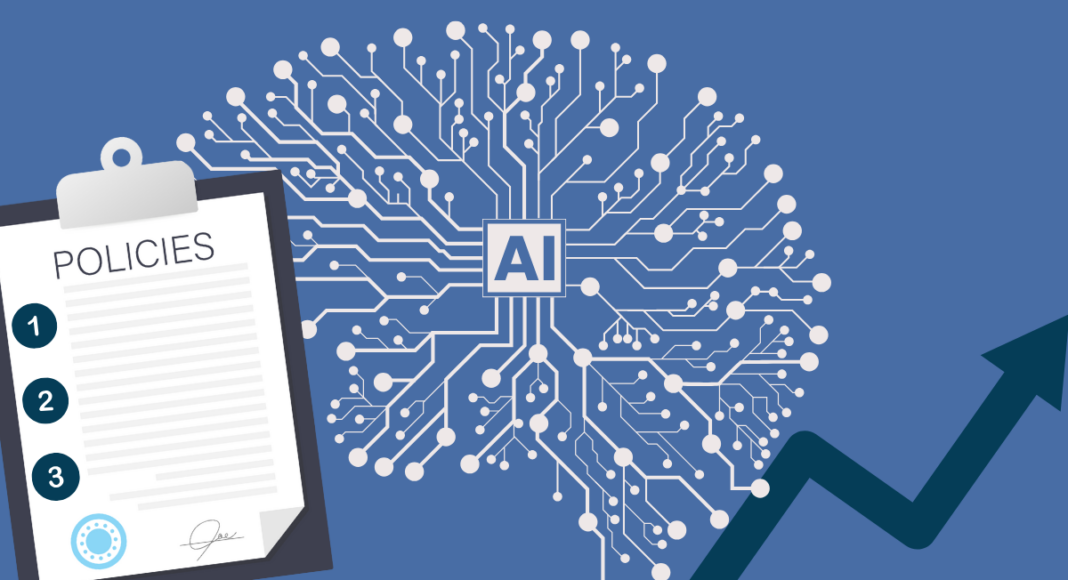The artificial intelligence market is rapidly developing but antitrust regulators are failing to update their policies, write Tennessee Attorney General and Reporter Jonathan Skrmetti and Kevin Frazier. Regulators’ passiveness risks repeating what happened to social media markets, where a few tech giants were able to acquire nascent competitors and dominate the market. The authors propose three policies to help maintain a competitive AI market.
Hindsight is twenty-twenty. Sadly, whether we learn from it is fifty-fifty (or less). American antitrust regulators’ current approach to acquisitions in the artificial intelligence market indicates that we are in danger of failing to heed the lessons of the immediate past, when massive social media platforms managed to swallow up startups with relatively little regulatory pushback. A glance at our phones’ social media folder shows the consequences of a relative dearth of competition: an ecosystem of apps owned by the giants, and some, like Instagram and WhatsApp, falling under common ownership.
Stunted competition deprives consumers of the benefits of innovation and reduces a transformative technology to a dreary engagement casino where social media giants like Meta (formerly Facebook, before its spree of acquisitions) and TikTok can employ addictive and antisocial algorithms that they might have to improve in a competitive market. This unfortunate outcome could have been avoided, or at least mitigated, if regulators had more carefully examined the many acquisitions that would turn already-huge market players like Facebook into behemoths. Facebook’s acquisition of Instagram stands out as a particularly regrettable case study. A promising upstart was devoured in its infancy and the competitive fires of innovation dimmed. Now the Federal Trade Commission is seeking to undo its mistake. Will that be the case for similarly situated AI companies? We hope not.
Understanding the “killer acquisition”
The term “killer acquisition” describes a phenomenon where established entities acquire nascent competitors before they can develop into genuine rivals. These acquisitions typically evade robust regulatory scrutiny because the target company is small, its economic potential uncertain, and its revenue negligible compared to the acquirer. Moreover, tech giants can artfully frame their “core business” in narrow terms, making acquisitions appear to be a “diversification” play rather than a consolidation of their already substantial market power. Instagram was just a “photo sharing application” and not an emerging rival social network to Facebook, right? That company line was apparently convincing enough to allow Facebook to move forward with its twenty-seventh acquisition.
A closer look at that deal makes clear how strategic acquisitions can deprive consumers of a more competitive, dynamic market. Facebook framed the purchase as complementary—an expansion of its existing offerings. In retrospect, we now understand that Instagram represented a significant threat to Facebook’s dominance in social media, particularly as mobile platforms gained ascendancy. Tellingly, Facebook CEO Mark Zuckerberg spoke to the company’s broader strategy in an internal 2008 email, writing, “It is better to buy than to compete.” The opposite, of course, is true for consumers. That’s exactly why regulators need to rethink their approach to killer acquisitions as the AI economy gets off the ground.
The economic costs of consolidation
Killer acquisitions undermine economic dynamism. They disrupt the natural cycle of creative destruction that economist Joseph Schumpeter identified as central to innovation. When startups know their most likely exit strategy is acquisition by an incumbent, rather than growing to challenge that incumbent, their incentives align with perpetuating existing market structures rather than disrupting them.
Economic research indicates that these acquisitions create deadweight losses for society, meaning there is less economic activity than there would have been in a more competitive market. A landmark study by Colleen Cunningham, Florian Ederer, and Song Ma examined pharmaceutical acquisitions and found that drug development “projects acquired by an incumbent with an overlapping drug were 23.4 percent less likely to have continued development activity compared to drugs acquired by non-overlapping incumbents.” The implication is stark: Americans lost access to numerous potentially life-improving drugs because established companies found it more profitable to eliminate competition than to pursue innovation.
The digital realm is hardly immune from such dynamics. When Facebook acquired Instagram and, later, WhatsApp, it neutralized two potential competitors before they could develop business models that might have challenged Facebook’s social media dominance. The consumer cost may be less visible and less grave than in pharmaceuticals, but it is no less real—manifesting in diminished privacy protections, reduced feature innovation, and fewer alternatives in the marketplace. Facebook’s social media dominance does not just hurt individual users. Advertisers also suffer when they must compete for less ad space.
Legal frameworks lagging behind market realities
Our antitrust regime remains ill-equipped to address these challenges. The applicable statutory language of the Clayton Act prohibits acquisitions where “the effect…may be substantially to lessen competition, or to tend to create a monopoly.” Yet, courts and regulators have long struggled to precisely define what constitutes a “substantial” lessening of competition. The ambiguity effectively neuters the Act’s prophylactic intent given that the burden of proof rests with the plaintiffs (often the government, but sometimes private firms or consumers) to prove that the acquisition indeed substantially reduces competition. The default onus on the regulators to prove harm, rather than the defendants (the acquirer) having to prove that the acquisition will not create harm, in part reflects a legal bias toward a laissez-faire regulatory approach that treats government interventions into the market with skepticism.
Heightening these barriers to the plaintiff’s case are informational asymmetries: the defendant has much better knowledge of its market and its intent for the acquisition. These asymmetries are compounded in the context of the AI market, which is rapidly developing and where there is so much unknown about how the market will develop, in areas such as data collection for training models. Determination of whether an acquisition may substantially lessen competition necessarily involves a prediction of the effect of the deal. But any prediction involving AI right now is akin to predicting which college basketball team will win March Madness in 15 years based on the skills of elementary school athletes in the surrounding area: we have no clue which teams will have which players, what their collective strengths will be, or how those strengths will rank when stacked against the competition or what strategies will evolve to be dominant in a given period.
Computer scientists lack clear insights into how quickly AI will progress technologically. Sociologists retain doubts over how quickly society will integrate AI into various activities of social life. Economists have questions about the financial sustainability of labs offering their products at subsidized rates. And the impact of AI itself on all of those processes may have huge and unanticipated effects. This lack of knowledge hinders the accuracy of any predictions and renders the existing legal framework a poor fit to investigating AI acquisition at this stage. This mismatch has significant implications given that the nature of AI development tends toward anti-competitive outcomes.
AI: A sector particularly vulnerable to concentration
The AI sector exhibits characteristics that make it especially susceptible to unhealthy concentration. High barriers to entry—including extraordinarily expensive compute requirements, vast data needs, a limited talent pool, and a finite supply of graphic processing units—already advantage established players such as OpenAI, Anthropic, and Meta. Given the ongoing evolution of the AI market, labs have focused on accumulating as many of those inputs as necessary. As DeepSeek’s recent entry into the consumer market shows, entities with a sufficient amount of those coveted inputs can suddenly transform into a viable competitor. Prior to the launch of its r1 model, DeepSeek operated as a mere research outfit. DeepSeek’s deep talent pool and access to compute, courtesy of a Chinese Communist Party highly motivated to leverage AI, nevertheless allowed it to train a model with capabilities that quickly drew broad popular use despite serious data governance concerns.
AI resembles an input technology more than a standalone industry, making its concentration potentially more consequential for the broader economy. The company with the most data, most compute, and most talent will have a firm lead in any AI-related product market. The national security issues inherent in the AI arms race may further encourage government efforts to concentrate resources in national champions, potentially stifling long-term innovation as a result.
Several factors compound these concerns. AI development exhibits strong returns to scale and significant network effects. Models improve with more data; better models attract more users; more users generate more data. This virtuous cycle can quickly entrench market leaders and forestall competition. Google’s AI effort, for example, benefits from the trove of data uploaded to YouTube on a daily basis. Meta can likewise hoover up data from Instagram, Facebook, and Threads. Upstarts that lack such deep and productive sources of data will struggle to compete on that front.
Furthermore, the rapid pace of AI development creates significant uncertainty about which approaches will ultimately prove most valuable. In such an environment, established firms have powerful incentives to acquire promising startups across multiple technical trajectories—effectively hedging their bets while simultaneously foreclosing competitive threats. Though machine learning has proven to be the most viable AI architecture so far, that may change. Companies exploring different technical paths to developing leading AI may eventually experience a breakthrough. Whether and when that breakthrough becomes popularly available may hinge on whether that company has the chance to freely and independently continue that work by staving off acquisition.
Killing AI progress?
Critics may contend that heightened regulatory scrutiny of AI acquisitions would undermine the very innovation ecosystem it aims to protect. Many startups launch with acquisition as their explicit exit strategy—founders and investors alike often rely on the prospect of being acquired by larger firms to justify early-stage risk. A regulatory presumption that acquisitions are inherently anticompetitive could therefore chill investment in AI startups, particularly those developing specialized capabilities that may not independently constitute viable standalone businesses. This concern warrants serious consideration. However, it presents a false dichotomy between policies seeking to curtail acquisitions and policies that encourage startup formation. Evidence from other sectors, such as the biotech and pharmaceutical industries, suggests that robust venture capital ecosystems can thrive alongside more engaged merger review regimes. The critical distinction lies not in prohibiting acquisitions wholesale, but in distinguishing between those that genuinely complement existing offerings versus those that eliminate nascent competition.
Opponents may also argue that regulatory frameworks that seek to predict how markets will develop introduce unacceptable uncertainty into business planning. The argument goes that in rapidly evolving technological domains like AI, regulators lack the expertise and foresight to distinguish between benign and anticompetitive acquisitions. This criticism, while intuitively appealing and possibly correct, fundamentally misallocates the burden of uncertainty. The status quo already imposes massive uncertainty—not on acquiring firms, but on society itself, which bears the long-term costs of diminished competition without receiving proportionate benefits. When Facebook acquired Instagram, consumers lost the potential benefits of sustained competition. The frameworks we propose below don’t eliminate uncertainty. They merely redistribute it from the public to acquiring firms, which are better positioned to evaluate competitive implications and internalize the costs of their strategic decisions.
Preserving the innovation pipeline
Without intervention, we risk replaying the social media consolidation scenario with potentially graver consequences. A small handful of firms controlling the fundamental infrastructure of AI would constrain not only digital innovation but economic advancement across sectors. And as we have seen with social media, such consolidation can cause harm well beyond the mere economy.
Three policy approaches warrant serious consideration. While we do not necessarily endorse all of these policies given the evolving regulatory landscape around AI and its unpredictable rate and direction of technical progress, we offer them as a means to kick-start deliberations.
First, regulators could establish a presumption against acquisitions by dominant AI firms, such as those making the largest compute purchases, retaining a disproportionate share of AI talent, or holding datasets orders of magnitudes bigger than those of their competitors. Rather than requiring regulators to prove harm, acquiring companies could bear the burden of demonstrating that an acquisition will not harm consumers by reducing competition. This approach acknowledges the information asymmetry between regulators and firms as well as the systemic risks of concentration, but also provides an avenue to acquisition where the acquiring company can persuasively articulate the benefit to consumers.
Second, we need greater regulatory humility about market trajectory predictions. Acquisition reviews should explicitly account for the dynamism and uncertainty inherent in emerging technologies. When Facebook acquired Instagram, only a clever few predicted the pivotal role mobile platforms would play in social media’s future. Similar blind spots undoubtedly exist in our current understanding of AI development paths.
Finally, acquisition approvals might include contingent divestiture provisions: essentially, regulatory “clawbacks” that would force a firm to divest an acquisition if certain anti-competitive conditions, such as a few firms holding the preponderance of compute, are crossed in the future. Such provisions would preserve flexibility while creating guardrails against the most problematic outcomes. This would mark a disruptive reform but warrants consideration as we collectively reevaluate our approach to killer acquisitions in tech industries. A similar approach could have spared consumers the harms of moribund competition in the search and social media spheres without kneecapping the nascent behemoths as they explored growth options. As AT&T showed, breaking up a dominant firm can unleash extraordinary innovation and provide consumers with decades of benefit from the ensuing competition.
Ensuring innovation through competition
The promise of artificial intelligence is too significant to be controlled by a handful of corporate gatekeepers. It is also too important to stifle through heavy-handed governmental control. Yet, without an appropriate degree of meaningful intervention, or at least a credible threat thereof, short-term market forces and existing legal frameworks risk leaving us with a handful of sclerotic leviathans contentedly optimizing existing revenue streams rather than creating new opportunities for consumers. By learning from our experience with social media consolidation and implementing forward-looking safeguards, we can foster an AI ecosystem that remains dynamic, competitive, and innovative, carrying benefits for our national security as well as for our consumers.
The path we choose now will determine whether artificial intelligence serves as a democratizing force that creates broadly shared benefits or becomes yet another domain where market power concentrates in the hands of a privileged few. We have seen where that road leads. The stakes demand we choose wisely.
Authors’ Disclosures: The authors report no conflicts of interest. You can read our disclosure policy here.
Articles represent the opinions of their writers, not necessarily those of the University of Chicago, the Booth School of Business, or its faculty.






